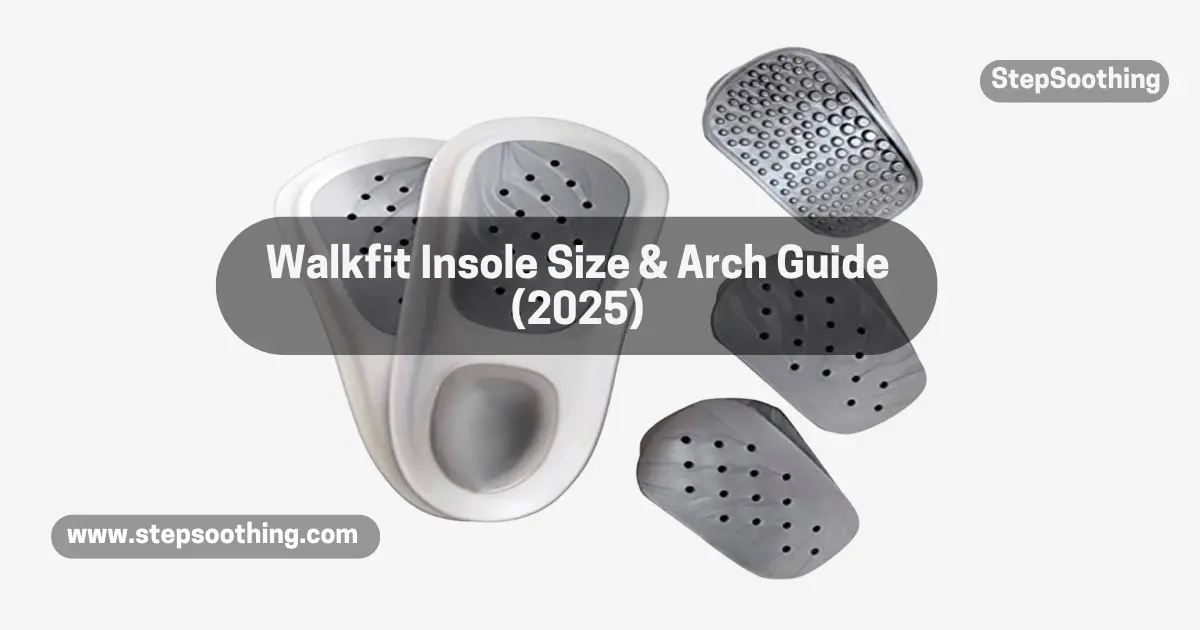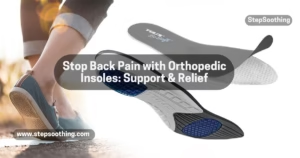Choosing the correct Walkfit insole size and arch support level is essential if you’re looking to reduce foot fatigue, improve posture, or even relieve joint discomfort. A poor fit can cause more harm than good, leading to added pressure on your ankles, knees, hips, and back. That’s why getting the right combination of size and arch support isn’t just about comfort—it’s about total body alignment and long-term health.
Walkfit insoles are engineered to align the foot naturally, which helps distribute weight more evenly across your joints. With unisex sizing and three arch support levels (Low, Medium, High), they provide a customizable solution for all foot types. This guide breaks down how to find the perfect size and support level to match your arch type, shoe size, and activity level—whether you’re an athlete, worker, or everyday user. For a full overview of the product line and what to consider before buying, check out our Walkfit Insoles Buying Guide.
Why Getting the Right Fit Matters for Walkfit Insoles
Proper fit affects more than just comfort—it influences your body’s alignment. Wearing the wrong size or arch level can contribute to joint pain and misalignment, especially if you already suffer from conditions like flat feet or plantar fasciitis. Learn more about the foot problems Walkfit insoles can help fix and why proper fitting is essential.
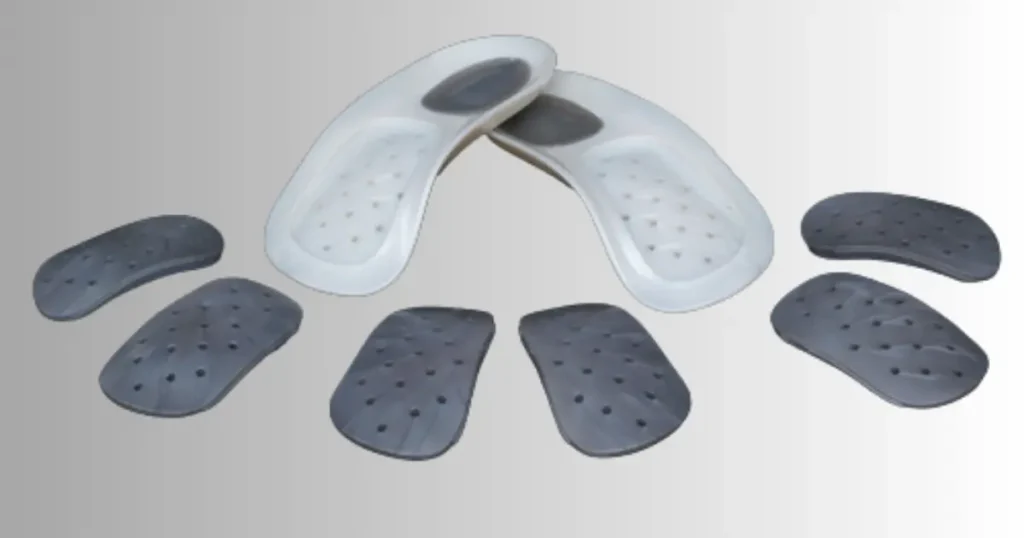
How Walkfit Sizing Works: Understanding Unisex Fit
Walkfit insoles follow a unisex sizing system, aligning specific insole models with U.S. men’s and women’s shoe sizes. This makes it easier for users to choose without needing custom measurements. However, you should always go by your actual shoe size, not your foot length or footbed measurement. If you wear a half-size (like 8.5), Walkfit recommends rounding up to the next full size to ensure proper fit and placement within the shoe.
Different types of shoes—running sneakers, work boots, or casual footwear—may slightly alter how the insole feels inside. To get the most accurate fit, try the insoles in the shoes you wear most often. Keep in mind that insoles that are too small may slide around, while oversized ones can bunch up and cause pressure points. If you’re unsure, always consult the official Walkfit sizing chart before purchasing.
When transitioning to Walkfit insoles, it’s important to adjust slowly. For an easy transition plan, read our Walkfit Adjustment Guide: Timeline & Tips to make the break-in period smoother and more comfortable.
Walkfit Insole Size Chart: Find Your Matching Model
Walkfit insoles come in lettered sizes (C, D, E, F), each corresponding to specific shoe size ranges. This chart helps users match their regular shoe size to the correct insole size. If needed, the insoles can be trimmed slightly for a better fit, but the supportive structure should be preserved.
Not sure which arch level is right for you? Check our detailed explanation in the Walkfit Insole Size and Arch Guide to choose between Low, Medium, and High inserts with confidence.
| US Men’s Shoe Size | US Women’s Shoe Size | Walkfit Insole Size |
| 6–7 | 7–8 | C |
| 8–9 | 9–10 | D |
| 10–11 | 11–12 | E |
| 12–13 | 13–14 | F |
It’s best to test the insoles in the shoes you wear for long periods, such as work shoes or walking sneakers. If the insoles feel tight or cause your foot to lift too high within the shoe, check that you’ve selected the correct size. You can also trim Walkfit insoles slightly for better shoe fit, but be careful not to damage the supportive structure.
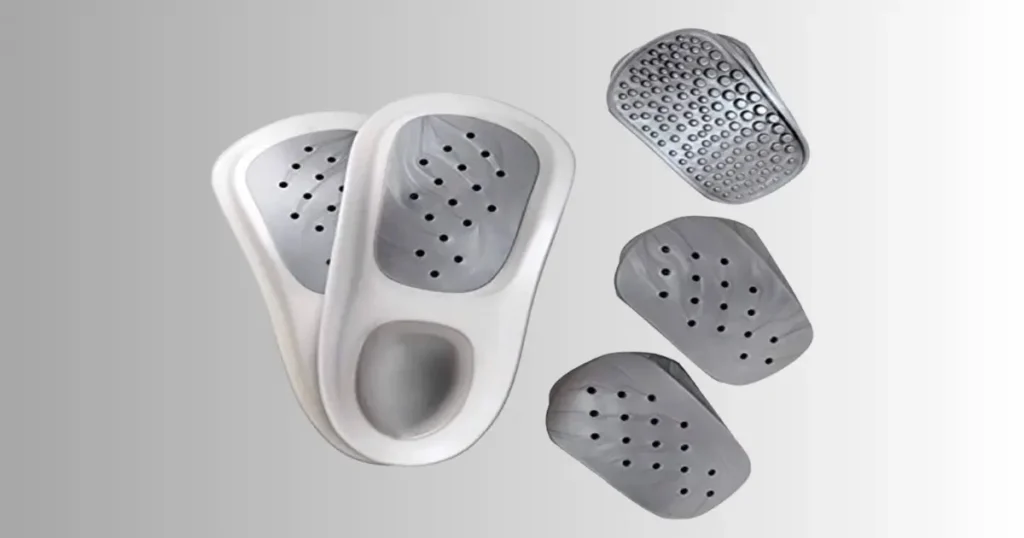
Arch Support Options: Low, Medium, or High?
Walkfit insoles include three interchangeable arch inserts that snap into the base of the insole: Low, Medium, and High. These allow you to tailor support based on your foot structure. Choosing the right level can help alleviate pain in your arches, heels, knees, or lower back by realigning your stride and improving shock absorption.
Start with the Low insert if you’re new to orthotics. It’s designed for gentle elevation and is ideal for flat feet or sensitive arches. Gradually progress to Medium or High only if Low doesn’t provide enough support. People with high arches often benefit from the High insert, but remember: comfort always comes before correction. Forcing a high arch level can lead to discomfort or even injury.
This flexibility is what makes Walkfit unique compared to others. To see how it measures up to alternative insoles, check out our Walkfit vs. Other Brands Comparison section in the buying guide.
How to Identify Your Foot Arch Type
Knowing your arch type is key to selecting the right Walkfit insert. The easiest way to determine this is by doing a wet test: wet the bottom of your foot, step on a piece of paper, and observe the shape. A full imprint indicates flat feet, while a narrow imprint means high arches. A moderate curve shows a neutral arch.
Arch support also plays a key role in how Walkfit insoles help your body. Learn how these insoles affect posture and body realignment in our posture-focused guide.
Step-by-Step Fitting Guide for Walkfit Insoles
- Measure Your Shoe Size – Use your regular US size. Round up for half-sizes (e.g., 9.5 becomes 10).
- Use the Size Chart – Match your shoe size to the appropriate insole letter size.
- Remove Existing Insoles – Take out factory insoles from your shoes for a clean fit.
- Start with Low Arch Insert – Wear for 1 hour a day for the first few days.
- Monitor Comfort – If Low feels too flat or unsupported, try Medium, then High if necessary.
- Gradual Progression – Increase wear time daily to help your body adapt.
- Adjust as Needed – Pain or pressure may indicate a need for a different support level or size.
This process ensures your feet and joints adapt safely. Following the right adjustment protocol can prevent discomfort and improve long-term results. Need more help? Visit our Walkfit Adjustment Guide for detailed steps.
Can Walkfit Insoles Help with Knee, Hip, and Back Pain?
Yes, if fitted properly, Walkfit insoles can significantly help reduce pain in your knees, hips, and lower back. Misalignment in your feet often leads to a chain reaction of imbalances through the kinetic chain. Flat feet, for instance, can cause the knees to collapse inward, shifting stress up to the hips and spine.
Walkfit’s customizable arch inserts help realign your foundation, improving gait, balance, and joint positioning. Over time, this may relieve joint stress and improve posture, especially when paired with the right shoes and daily routines like stretching. If your pain is chronic, consult with a licensed podiatrist or physical therapist for a more tailored treatment plan. Explore how Walkfit impacts the entire kinetic chain in our guide: Can Walkfit Insoles Reduce Knee, Hip, and Back Pain?.
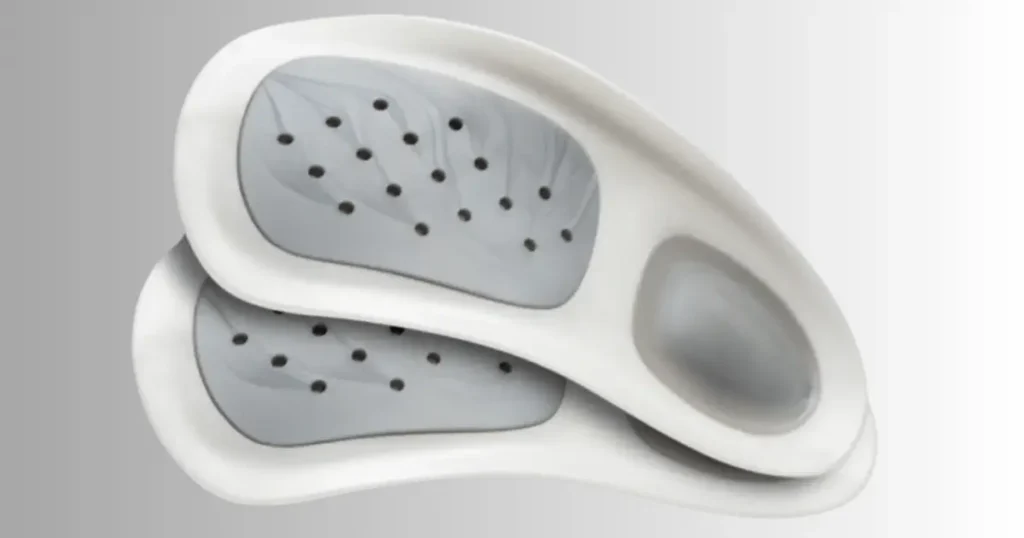
Common Issues & Walkfit Troubleshooting Tips
My feet hurt after using Walkfit insoles—what should I do?
Initial soreness is common, especially if you’ve never used orthotics before. Your muscles and tendons need time to adapt to the new alignment. Try reducing wear time to 30 minutes per day, then slowly increase it. You can also switch back to a lower arch level if needed.
For guidance on adjusting to Walkfit insoles properly, refer to the full Walkfit Adjustment Timeline & Tips.
Can I use Walkfit in all shoes?
Walkfit insoles work best in closed footwear—sneakers, work boots, loafers. They may not fit well in slim or open shoes like ballet flats or sandals. If you wear various shoe types, consider buying an extra set of insoles or using a different insole system for narrower shoes.
When to Consult a Podiatrist
If pain continues beyond 1–2 weeks, even after trying different inserts and sizes, it’s time to consult a medical expert. Walkfit insoles are great for moderate conditions, but some foot problems may require custom orthotics.
Additionally, people with diabetes, arthritis, or previous foot injuries should not rely solely on over-the-counter products like Walkfit without professional supervision. A podiatrist can offer a gait analysis, pressure mapping, or prescribe personalized orthotic solutions for better results.
Final Takeaways: Get the Best Fit from Walkfit Insoles
- Choose your Walkfit insole size based on your regular shoe size—round up for half-sizes.
- Always start with the Low insert and work your way up only if more support is needed.
- Your arch type determines the best support level: flat = low, neutral = medium, high = high.
- Gradual wear-in is essential; don’t rush the adaptation period.
- Persistent pain should never be ignored—consult a medical professional when needed.
Want a step-by-step overview? Bookmark the full Walkfit Buying Guide to get the most out of your insoles.
Frequently Asked Questions
What if I’m in between sizes?
Always round up to the next full size for the best Walkfit insole fit.
My feet hurt after using Walkfit.
Reduce usage time and stick with the Low insert. If pain persists, try a different arch or consult a podiatrist.
Can I use Walkfit in any shoes?
Best used in closed shoes like sneakers or work shoes; may not fit sandals or narrow shoes well.They’re best for closed footwear (like sneakers or work shoes), but may not suit sandals or narrow shoes.
How do I know if I need more/less arch support?
If arches feel strained, use a lower insert; if unsupported, try a higher arch insert.If your arches feel strained, lower the insert. If there’s no support, increase it.
When should I see a doctor?
Consult a doctor if foot, knee, or back pain continues after 1–2 weeks of use.
